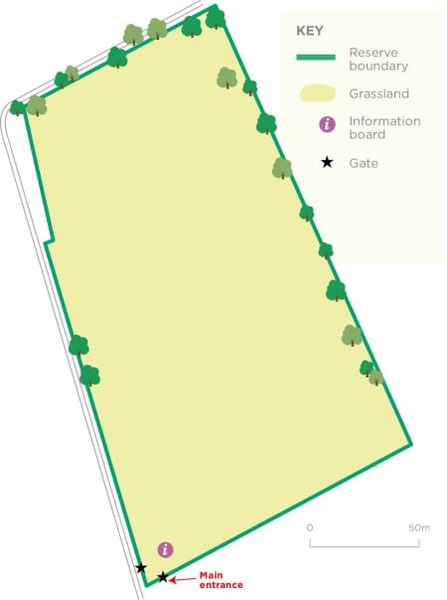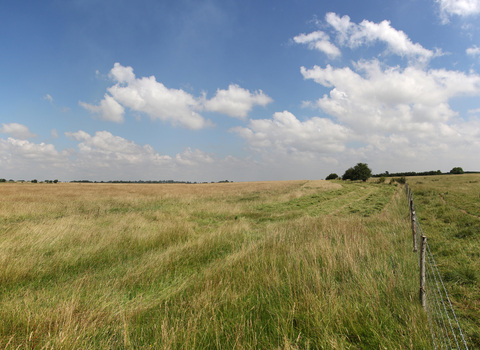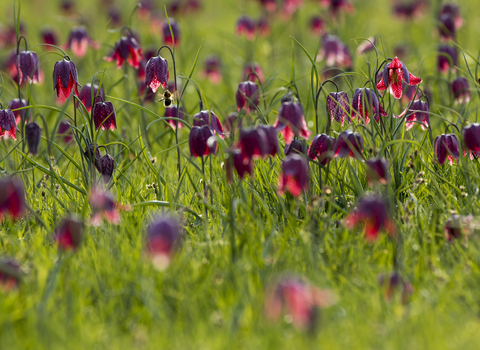Snakeshead fritillaries at Upper Waterhay. Credit: Eleanor Dodson
Upper Waterhay
Location
Know before you go
Dogs
See our FAQ's for more information
When to visit
Opening times
Open at all timesBest time to visit
Spring and summer. Nearby attractions include Cotswold Water Park (1 mile), Keynes Park (2 miles), North Meadow National Nature Reserve (3 miles), Roman Amphitheatre, Cirencester (5 miles).About the reserve
This stunning wildflower meadow is a stronghold of the snakeshead fritillary, which in the 1950s was so common along the Thames Valley that they were picked and gathered by the armload. Sadly, they now survive only in a few protected places. Uniquely most of them here are creamy white, rather than the more common dark purple.
We bought the reserve in 1970. A farmer grazes it with cattle during the autumn when fritillary bulbs are dormant. The cattle are removed in winter so that hay can grow. We cut the hay in early July after the flower seeds have ripened and dispersed.
See the bell-shaped flowers from mid-April. The colour palette of the meadow changes throughout the summer and includes the dark crimson heads of great burnet and the golden flowers of rough hawk’s-beard.
The reserve lies on the floodplain of the River Thames and each year the winter floods enrich the meadows by depositing alluvial silt over them. Wetland plants thrive - marsh marigold, ragged robin, water forget-me-not and the mauve lady’s smock - larval food plant of green-veined white and orange-tip butterflies. In spring mayflies, with their three distinctive curving tails, dance in the air. Summer brings clouds of common blue damselflies. In their wake come reed buntings, long-tailed tits and sedge warblers; while during flooding snipe, curlew and gadwall forage in the mud. You may be lucky enough to see the rare marsh harrier and bittern, as well as the more common fox and roe deer.



